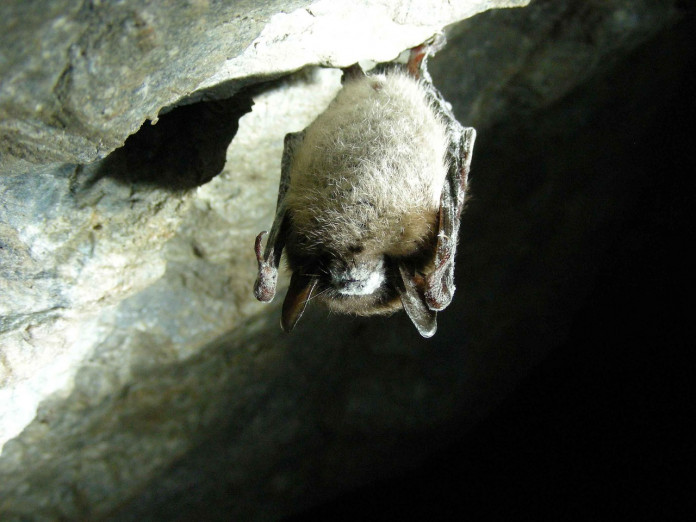UNIVERSITY PARK, Pa. — A newly discovered virus infecting the fungus that causes white-nose syndrome in bats could help scientists and wildlife agencies track the spread of the disease that is decimating bat populations in the United States, a new study suggests.
Regional variations in this virus could provide clues that would help researchers better understand the epidemiology of white-nose syndrome, according to Marilyn Roossinck, professor of plant pathology and environmental microbiology, College of Agricultural Sciences, Penn State.
Bats
White-nose syndrome is a particularly lethal wildlife disease, killing an estimated 6 million bats in North America since it was identified in 2006.
The disease, caused by the fungus Pseudogymnoascus destructans, was first found in New York and now has spread to 29 states and four Canadian provinces.
Although several species of bats have been affected, some of the most prevalent species in the Northeast — such as little brown bats — have suffered estimated mortality as high as 99 percent.
These losses have serious ecological implications. For instance, bats have a voracious appetite for insects and are credited with helping to control populations of mosquitoes and some agricultural pests.
Fungus
The researchers examined 62 isolates of the fungus, including 35 from the United States, 10 from Canada and 17 from Europe, with the virus infection found only in North American samples.
P. destructans is clonal, meaning it is essentially identical everywhere it has been found in North America, making it difficult to determine how it is moving, said Roossinck, who also is affiliated with Penn State’s Center for Infectious Disease Dynamics.
“But the virus it harbors has quite a bit of variation,” she said.
“For example, in all the fungal isolates from Pennsylvania we analyzed, the viruses are similar. But those viruses differ from the ones we found in isolates from Canada, New York and so forth.”
Roossinck explained that fungal viruses are not readily transmitted among fungi, so the variation in the viral genome probably is occurring as the virus evolves within each fungal isolate, providing a marker.
“So we believe the differences in the viruses reflect the movement of the fungus, and this viral variability should enable us to get a better handle on how the disease is spreading,” she said.
The virus is not thought to cause disease, but researchers don’t yet know whether it influences the virulence of the fungus, Roossinck noted.
“It’s very difficult to study virulence in terms of infection in the bats in part because there are almost no bats left to study, and we don’t have an experimental system that works.”
Findings
The researchers, who reported their results Dec. 27 online in PLOS Pathogens, were able to eliminate the virus from one fungal isolate, which provided a virus-free isolate that they could compare to wild isolates that harbor the virus to look for biochemical changes.
“Although we didn’t look directly at the role of the virus in white-nose syndrome, there is evidence of a close biological relationship between the fungus and the virus,” Roossinck said.
“We found that the virus-free isolate makes many fewer spores than an isolate with the virus, suggesting that the virus may be beneficial to the fungus in reproduction.
“We don’t know whether the fungus spreads through spores or through direct contact between bats,” she said. “But if it spreads via spores, the virus actually could be enhancing the spread of white-nose syndrome as a result of this increased spore production.”
Roossinck said the study has important implications in the search for ways to save the bats of North America.
“There’s a lot we don’t know about white-nose syndrome, and before we can develop control strategies, we have to better understand the biology of the system. We now have a tool that can be used in broader studies to examine the epidemiology of the disease.”










